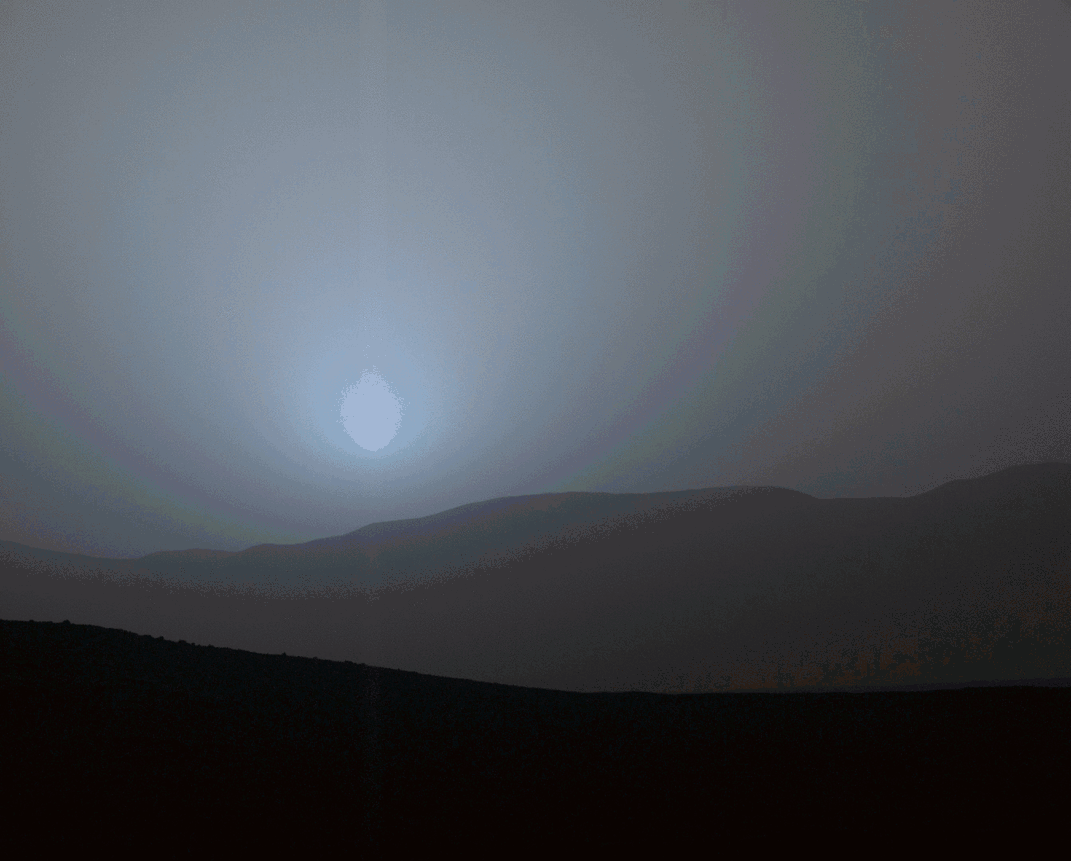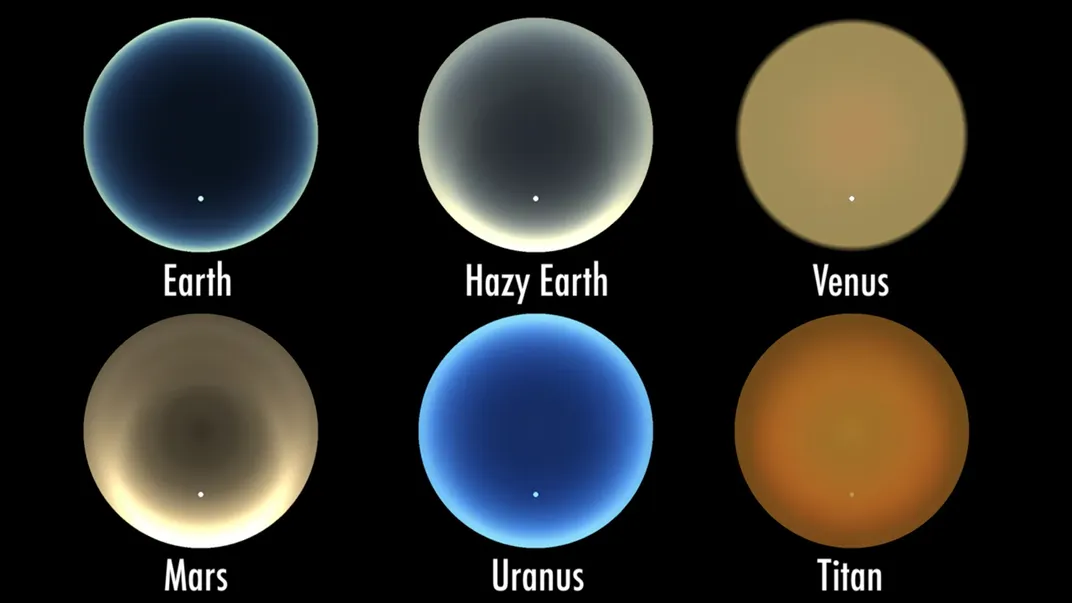Watch Colorful Sunsets on Distant Planets in This NASA Simulation
New models from a NASA scientist show what the sun’s setting might look like on Venus, Uranus and Mars
Picture a sunset on planet Earth in all its possible hues: oranges, yellows, reds, and pinks. What would that same sunset look like if you were standing on Venus? What about if you were watching from Mars, or even from far-away Uranus?
All those planets revolve around the same sun, but the view from the ground differs drastically depending on each world’s atmosphere. On icy Uranus, the setting sun turns the bright blue sky to turquoise, while light on Venus fades from a pale yellow to a greenish brown.
A new simulation from Geronimo Villanueva, a scientist at NASA’s Goddard Space Flight Center, lets users compare and contrast models of these spectacular, otherworldly sunsets. Villanueva created the simulations while working on computer modeling tool for a future mission to Uranus, according to a NASA statement.
His program uses data about each planet’s atmosphere to model what sunsets might look like on Venus, Mars, and Saturn’s moon Titan, as well as modelling Earth’s evening sky in clear and hazy conditions.
As Chelsea Gohd reports for Space.com, the sun’s “setting” is actually what one would see as the planet or moon rotates away from the light of the star.
“As these worlds rotate away from the light of the Sun, which is what happens during a sunset, photons get scattered in different directions depending on the energy of the photons and the types of molecules in the atmospheres,” NASA describes in a statement. “The result is a lovely palette of colors that would be visible to those standing on these worlds.”
Uranus’ atmosphere, for instance, is made up of hydrogen, helium and methane. When light from the sun hits the planet’s atmosphere, these molecules absorb the light’s longer red wavelengths. Blue and green wavelengths scatter off the molecules, creating the appearance of a green-blue glow. As Passant Rabie reports for Inverse, this scattering effect—known as Rayleigh scattering—is also what makes Earth’s sky appear blue.
Villanueva’s simulations are the latest project from the Planetary Spectrum Generator, a NASA tool that helps scientists learn about the makeup of planets and other space bodies by examining their atmospheres. He is currently working on modelling Uranus’ sky, a project that could one day provide vital information for a probe sent to explore Uranus’ atmosphere. Villanueva created these sunset simulations to check the accuracy of his models, per the NASA statement.

Villanueva’s simulation of a Martian sunset looks remarkably similar to another one created in 2015, when researchers pieced together images from the Opportunity rover’s panoramic camera. As Laura Clark reported for Smithsonian magazine at the time, the time-lapse images show how Mars’ sky goes from brown to a bright, pale blue during sundown, an effect caused by the sunlight bouncing off of the high quantity of fine dust in the its atmosphere.
/https://tf-cmsv2-smithsonianmag-media.s3.amazonaws.com/accounts/headshot/nora.png)



/https://tf-cmsv2-smithsonianmag-media.s3.amazonaws.com/accounts/headshot/nora.png)